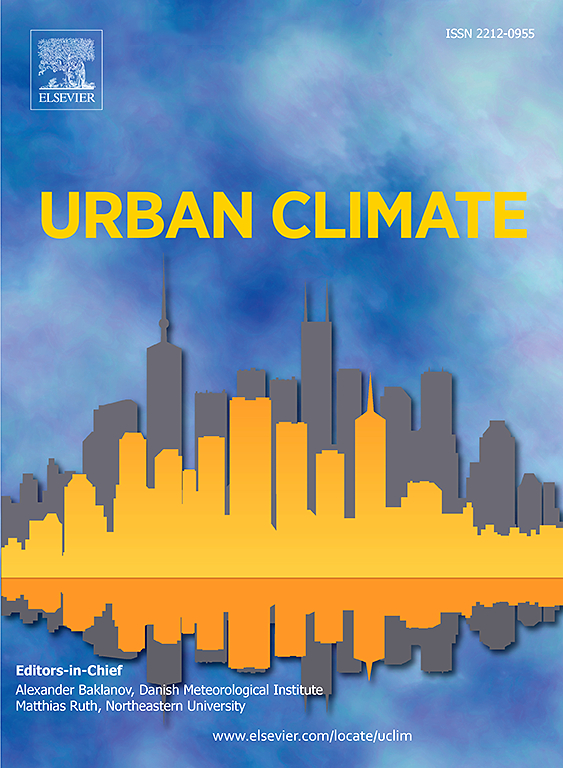Probing the mechanism of prolonged ozone pollution in arid and semi-arid urban areas
IF 6
2区 工程技术
Q1 ENVIRONMENTAL SCIENCES
引用次数: 0
Abstract
Tropospheric ozone has significant impacts on human health, atmospheric oxidizing capacity and global climate change. Despite stringent control measures, summer ozone pollution in the arid and semi-arid regions of China has increased. The average ozone (90th percentile of the daily maximum 8-h sliding average) concentration in Lanzhou increased by 53 μg m−3 from 2013 to 2021. The primary factors driving changes in ozone are not clear, hampering the implementation of effective control strategies. This study aims to address the above issue by using the WRF-Chem model, as well as observational data in three arid and semi-arid urban stations (Lanzhou, Yinchuan, and Xining) from 2013 to 2021. The results indicated that changes in anthropogenic emissions such as NOX (nitrogen oxides), VOCS (volatile organic compounds), and particulate matter, led to a 0.98 ppb increase while meteorological variations contributed to a 1.68 ppb increase in summer daytime ozone concentration in Lanzhou from 2013 to 2021. Anthropogenic emissions primarily affect ozone levels by influencing the chemical and vertical mixing processes in the atmosphere. Changes in ozone concentration in Lanzhou from 2013 to 2021 were primarily influenced by meteorological variations rather than changes in anthropogenic emissions. Observational data in Lanzhou, Yinchuan, and Xining showed that summer ozone concentration exhibited stronger correlation with relative humidity than with temperature, which is a unique phenomenon compared to those cities in humid regions in eastern China. This study enhances our understanding of the mechanisms underlying ozone pollution in industrial cities located in arid and semi-arid regions.
干旱半干旱城市臭氧污染持续机制探讨
对流层臭氧对人类健康、大气氧化能力和全球气候变化具有重要影响。尽管采取了严格的控制措施,但中国干旱半干旱地区夏季臭氧污染仍有所增加。2013 - 2021年,兰州市臭氧平均浓度(日最大8 h滑动平均值第90百分位)增加53 μg m−3。驱动臭氧变化的主要因素尚不清楚,阻碍了有效控制策略的实施。本文利用WRF-Chem模型,结合兰州、银川和西宁3个干旱半干旱城市站2013 - 2021年的观测数据,对上述问题进行了研究。结果表明:2013 - 2021年,人为排放(如NOX、VOCS和颗粒物)的变化导致兰州夏季白天臭氧浓度增加0.98 ppb,而气象变化导致夏季白天臭氧浓度增加1.68 ppb。人为排放主要通过影响大气中的化学和垂直混合过程来影响臭氧水平。2013 - 2021年兰州市臭氧浓度变化主要受气象变化的影响,而非人为排放的影响。兰州、银川和西宁的观测数据表明,夏季臭氧浓度与相对湿度的相关性强于与温度的相关性,这是中国东部湿润地区城市所特有的现象。本研究增强了我们对干旱半干旱地区工业城市臭氧污染机理的认识。
本文章由计算机程序翻译,如有差异,请以英文原文为准。
求助全文
约1分钟内获得全文
求助全文
来源期刊

Urban Climate
Social Sciences-Urban Studies
CiteScore
9.70
自引率
9.40%
发文量
286
期刊介绍:
Urban Climate serves the scientific and decision making communities with the publication of research on theory, science and applications relevant to understanding urban climatic conditions and change in relation to their geography and to demographic, socioeconomic, institutional, technological and environmental dynamics and global change. Targeted towards both disciplinary and interdisciplinary audiences, this journal publishes original research papers, comprehensive review articles, book reviews, and short communications on topics including, but not limited to, the following:
Urban meteorology and climate[...]
Urban environmental pollution[...]
Adaptation to global change[...]
Urban economic and social issues[...]
Research Approaches[...]
 求助内容:
求助内容: 应助结果提醒方式:
应助结果提醒方式:


